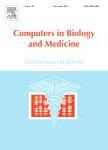版权所有:内蒙古大学图书馆 技术提供:维普资讯• 智图
内蒙古自治区呼和浩特市赛罕区大学西街235号 邮编: 010021

作者机构:The Department of Critical Care Medicine First Affiliated Hospital of Harbin Medical University Harbin China Thuwal Saudi Arabia The Cancer Institute and Department of Nuclear Medicine Fudan University Shanghai Cancer Center Shanghai China College of Computer and Control Engineering Northeast Forestry University Harbin China Ningbo China The Department of Prosthodontics First Affiliated Hospital of Harbin Medical University Harbin China
出 版 物:《Computers in Biology and Medicine》 (Comput. Biol. Med.)
年 卷 期:2025年第187卷
页 面:109760-109760页
核心收录:
学科分类:0710[理学-生物学] 07[理学] 09[农学] 0835[工学-软件工程] 0803[工学-光学工程] 0812[工学-计算机科学与技术(可授工学、理学学位)]
基 金:This research was funded by the Heilongjiang Province Key RD Program (JD22C005 2023ZX02C10 2022ZX01A30 GA23C007) Hunan Provincial Key RD Program 2023SK2060 Jiangsu Provincial Key RD Program BE2023081 the 430 National Natural Scientific Foundation of China and the Heilongjiang Province Key RD 431 Program (GA21C011).This research was funded by the Heilongjiang Province Key RD Program ( JD22C005 2023ZX02C10 2022ZX01A30 GA23C007 ) Hunan Provincial Key RD Program 2023SK2060 Jiangsu Provincial Key RD Program BE2023081 the 430 National Natural Scientific Foundation of China [ 82172164 ] and the Heilongjiang Province Key RD 431 Program ( GA21C011 )
摘 要:Infected region segmentation is crucial for pulmonary infection diagnosis, severity assessment, and monitoring treatment progression. High-performance segmentation methods rely heavily on fully annotated, large-scale training datasets. However, manual labeling for pulmonary infections demands substantial investments of time and labor. While weakly supervised learning can greatly reduce annotation efforts, previous developments have focused mainly on natural or medical images with distinct boundaries and consistent textures. These approaches is not applicable to pulmonary infection segmentation, which should contend with high topological and intensity variations, irregular and ambiguous boundaries, and poor contrast in 3D contexts. In this study, we propose a cascading point-annotation framework to segment pulmonary infections, enabling optimization on larger datasets and superior performance on external data. Via comparing the representation of annotated points and unlabeled voxels, as well as establishing global uncertainty, we develop two regularization strategies to constrain the network to a more holistic lesion pattern understanding under sparse annotations. We further encompass an enhancement module to improve global anatomical perception and adaptability to spatial anisotropy, alongside a texture-aware variational module to determine more regionally consistent boundaries based on common textures of infection. Experiments on a large dataset of 1,072 CT volumes demonstrate our method outperforming state-of-the-art weakly-supervised approaches by approximately 3%–6% in dice score and is comparable to fully-supervised methods on external datasets. Moreover, our approach demonstrates robust performance even when applied to an unseen infection subtype, Mycoplasma pneumoniae, which was not included in the training datasets. These results collectively underscore rapid and promising applicability for emerging pulmonary infections. © 2025